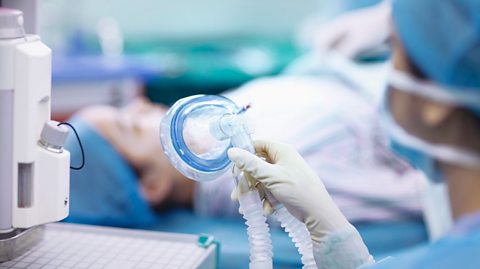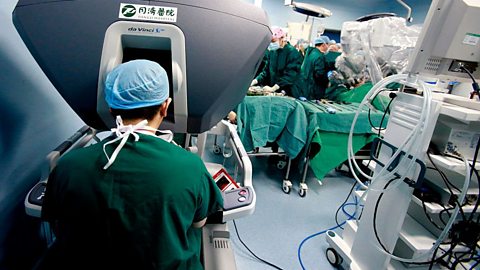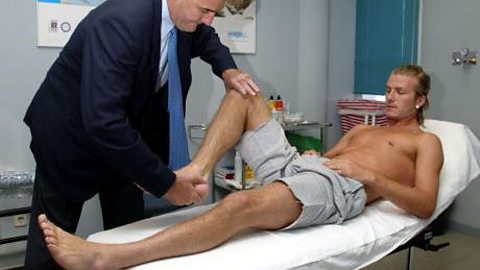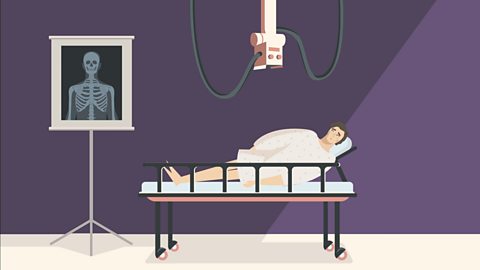Medicine breaks new ground all the time. Whether it's using DNA analysis to learn more about diseases or rejuvenating skin cells - there's always headlines over the latest discoveries.
It means you may not hear so much about procedures that are now considered routine, such as blood transfusions or anaesthetics. But there was a time when these were just as big news as the research which brought us the Covid-19 vaccines. Here, ¬ť∂Ļ‘ľŇń Bitesize looks at the origins of four medical breakthroughs which were amazing at the time, but now take place daily.
The road to safe blood transfusion
Transferring blood from one person or animal to another for health purposes is not a new concept. It‚Äôs even mentioned in ¬ť∂Ļ‘ľŇńr‚Äôs Odyssey, written around 2,700 years ago.
The possibility of it happening in reality was first sparked by the physician William Harvey’s 1628 description of how blood circulates through our body. The syringe, which allows treatments to be given directly into someone's bloodstream was another important step. In the 1650s, different types of syringe were pioneered by the scientist Blaise Pascal (as part of his research into pressure) and the architect Christopher Wren.

The first successful blood transfusion was administered between animals by physician Richard Lower in 1666. The following year, Jean-Baptiste Denis (also known as Denys) attempted a blood transfusion from a lamb to a man who was feeling feverish. It worked, although it is believed this was because the amount of lamb's blood used was so small it did not have any negative effects (it is dangerous to mix animal and human blood and is a world away from today's transfusion techniques). Denis continued to carry out transfusions until the death of a patient led to a court case. Eventually, a ban on transfusions was imposed by various organisations, including the French parliament.
Transfusions became safer during the 20th Century, thanks to Karl Landsteiner’s Nobel Prize-winning discovery that blood comes in different types. It can be fatal to a patient if two incompatible kinds of blood are mixed together. But with an understanding of different blood groups and careful screening, blood transfusions are now an everyday part of modern surgery.
Plastic surgery during the First World War
World War One was fought using a huge range of modern weapons. It meant that many soldiers returned home with terrible injuries to their face and body.
One man who wanted to help repair those injuries as much as possible was Harold Gillies, a surgeon from New Zealand. He was based in England and arranged for any personnel from the field hospitals with facial wounds to be sent to him at Cambridge Military Hospital in Aldershot.
As the war continued, Gillies worked hard to get a hospital dedicated to treating facial injuries established. It led to The Queen’s Hospital opening in Sidcup in 1917. The first of its kind in the world, its aim was to rebuild patients’ faces in the best way possible, using tissue from other parts of the body if necessary. They worked with skin grafts, where patches from other parts of the patient’s body were used to cover wounds.
The work Gillies and his team pioneered in The Queen’s Hospital paved the way for the plastic surgery that still takes place today. You may be wondering where the plastic part of plastic surgery comes in. It’s not referring to the substance used in manufacturing toys, milk cartons and sweet wrappers. The name comes from the Greek word plastikos, meaning to mould something into shape, something the early plastic surgeons strove to do when rebuilding their patients.
Anaesthesia before surgery in the 19th Century
Numbing all or part of our bodies before surgery is a regular part of medicine today. But anaesthesia, as it is called, took time to become reality.
The history behind the process dates as far back as 4,000 BC, when opium - from the poppy flower - was used as an anaesthetic.

A significant milestone occurred on 16 October 1846 in Massachusetts General Hospital, USA. William TG Morton successfully demonstrated an anaesthetic, using the chemical ether on the patient Edward Gilbert Abbott. News of the procedure spread quickly. In December of the same year, a doctor called James Robinson used anaesthesia to extract a tooth from a patient. At around the same time, two UK-based surgeons, Dr William Scott and Dr Robert Liston, were also able to remove limbs from patients placed under anaesthetic, the first surgery of its kind in Britain.
Operating on the human heart
Ludwig Rehn and Henry Souttar are two names to have played a major role in how operations involving the heart are handled.
It was in 1896 that Ludwig Rehn was able to apply stitches to a wound in a patient’s heart. They made a full recovery and the operation can be seen as the beginning of what is called cardiac surgery.
Almost 30 years later, Henry Souttar opened up further possibilities for cardiac surgery when he operated on the valve of a patient’s heart at Middlesex Hospital. It was the first time an operation of its kind had been attempted. Another breakthrough occurred in 1938, when Dr Robert Gross used surgery to close up a hole (known as a patent ductus arteriosis, or PDA for short) in a seven-year-old patient’s heart at Boston Children’s Hospital in the USA.
This article was published in July 2022.
Three amazing medical breakthroughs you may not know about
Researchers select the breakthroughs that make them excited

Stages of a football medical
The process which can make transfer deadline very interesting.

GCSE History
